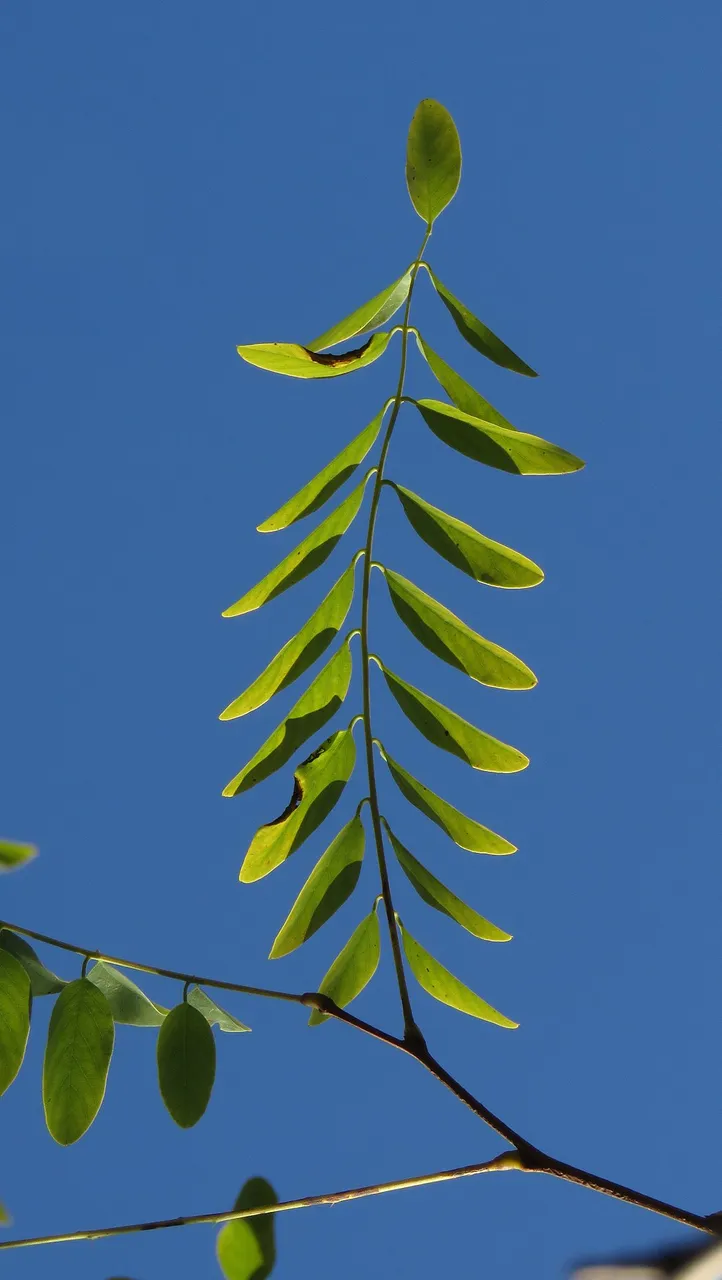I always called it acacia. People I know also call it acacia. But today, some minutes ago ...
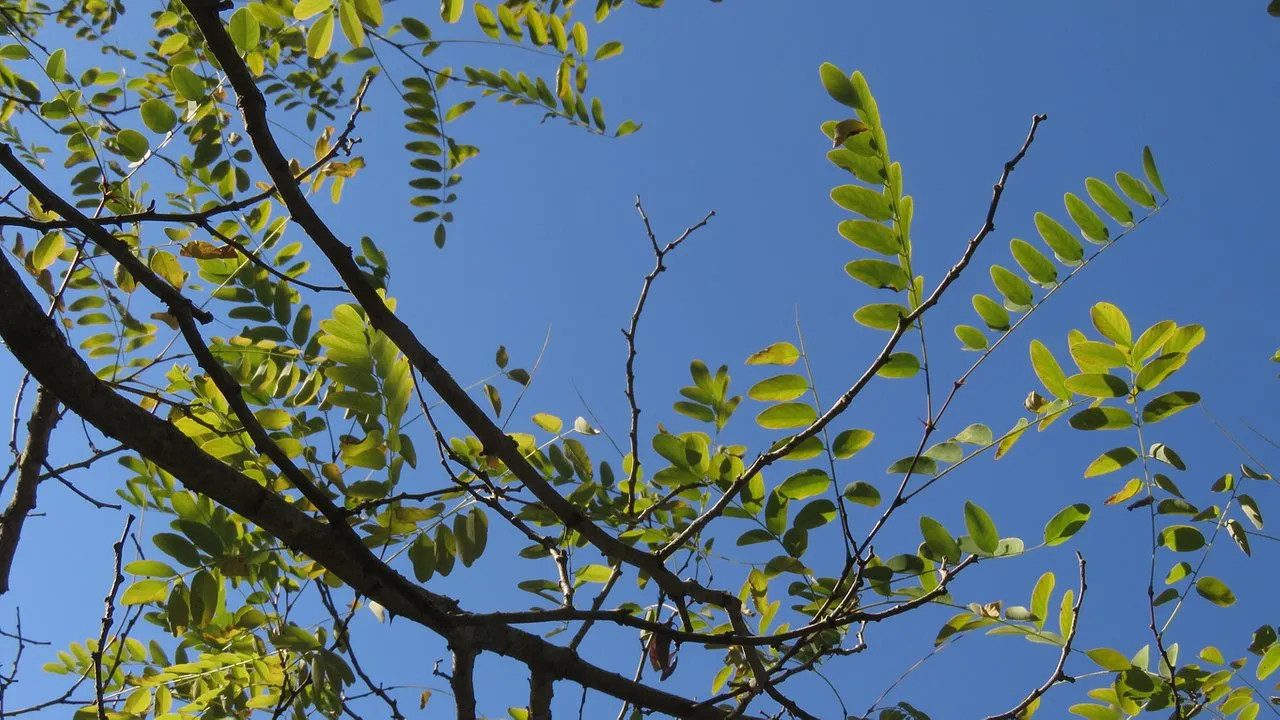
... while preparing the post, I found out that this is the Robinia pseudoacacia, commonly known as Black locust tree or False acacia.
Today, I spent about an hour under those trees, in an inland area fifty kilometers from home. The day was warm in the places exposed directly to the sun but considerably colder in the shade. The trees were young, small, the branches were only sparsely covered with feather-like foliage, so there wasn't much shade underneath. And fortunately so, because insects and spiders were active only in warm, sunny places. And I was searching for some small animals to enrich this Tree Tuesday story.
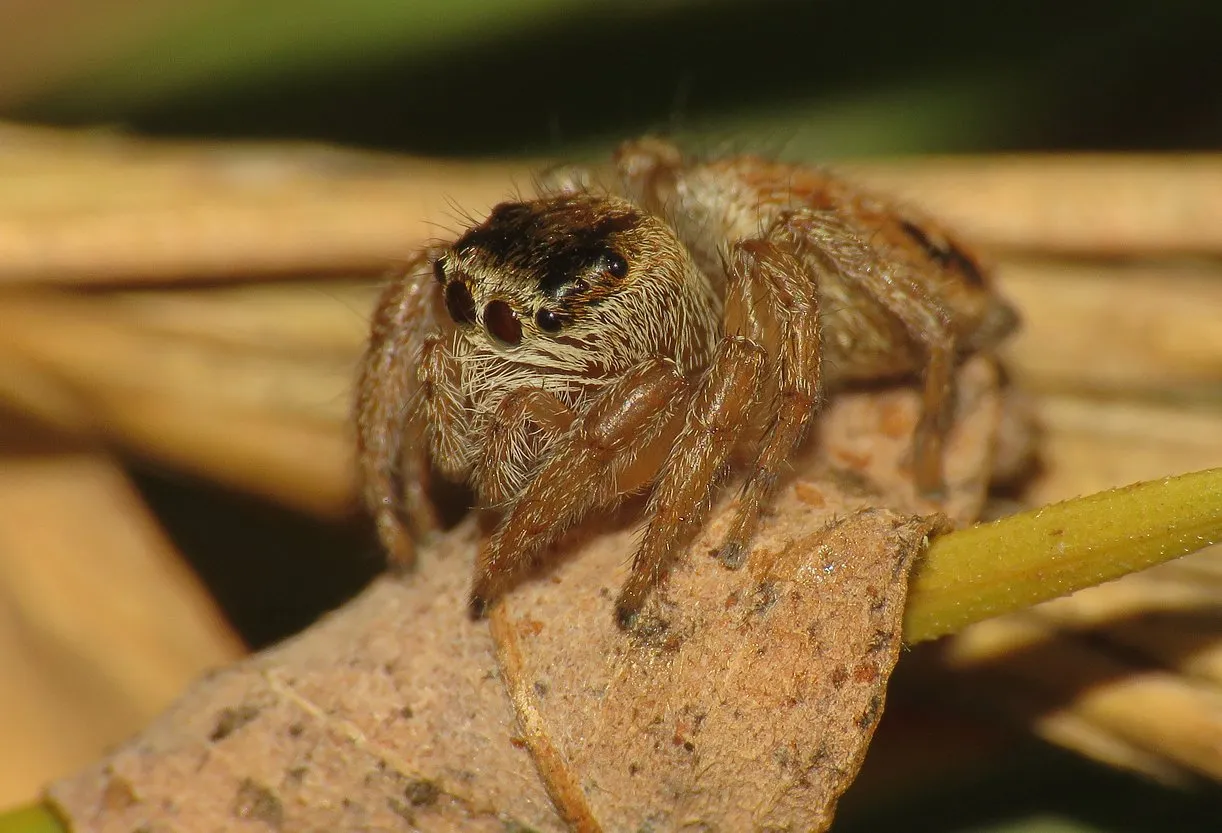
This small jumping spider was the first creature I noticed. Hasarius adansoni is the name of the species.
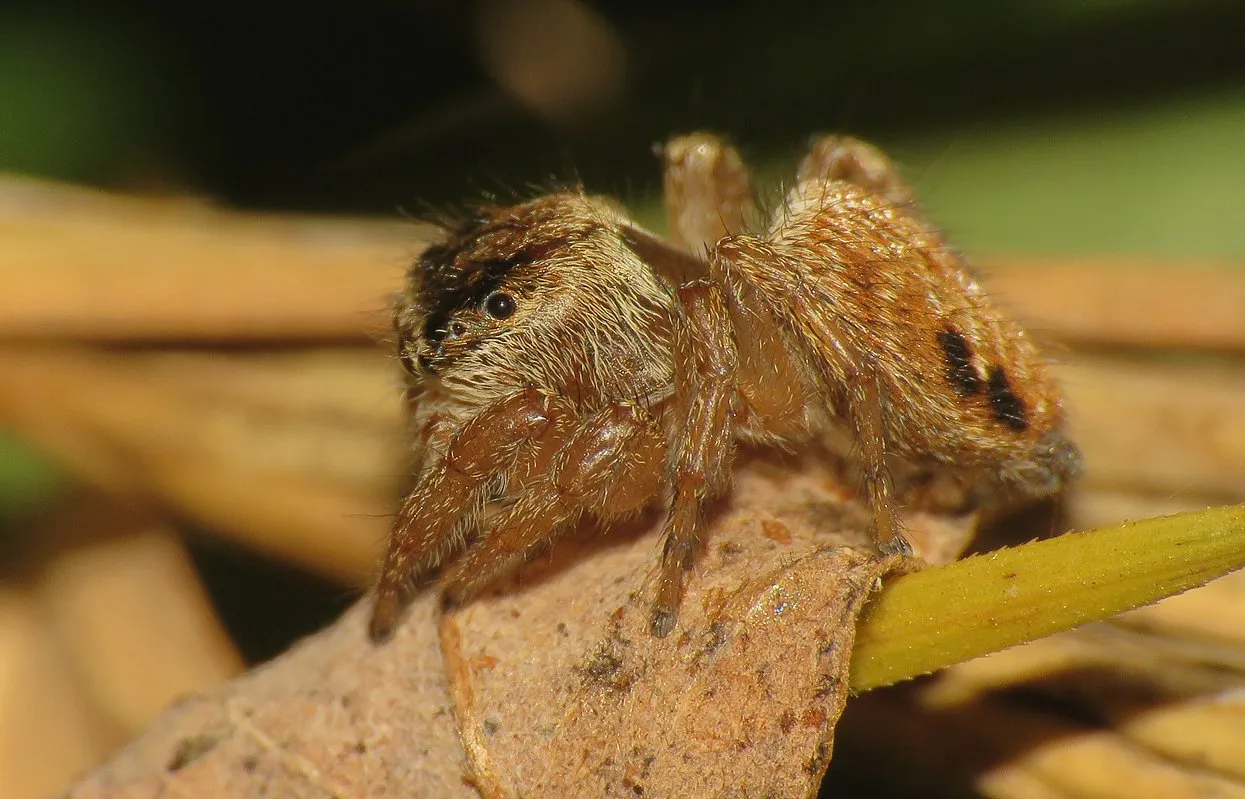
While I was photographing, the spider was exploring some fallen leaf. And soon jumped away.

Some minutes later, on a blade of grass, I found this leafhopper. The Arocephalus punctum.
The black locust tree is native to the eastern parts of North America, but it's naturalized and widespread in many other temperate areas around the globe. It was introduced in Europe during the 17th century. I learned all this stuff while preparing this post. Since this False acacia is very common and iconic in the local landscape, never crossed my mind that this could be an imported species.
The false in the common name, and the pseudoacacia in the scientific one, are there because of the similarity between the feathered leaves of this species and some, not closely related acacias from the genus Mimosa. Both species are similar in the form of their leaves and thorns but the flowers are shaped very differently.

Pisaura mirabilis is another spider that I found under the tree.

This is a species that appears very early in the spring and disappears pretty late in the autumn. Very widespread in this area.
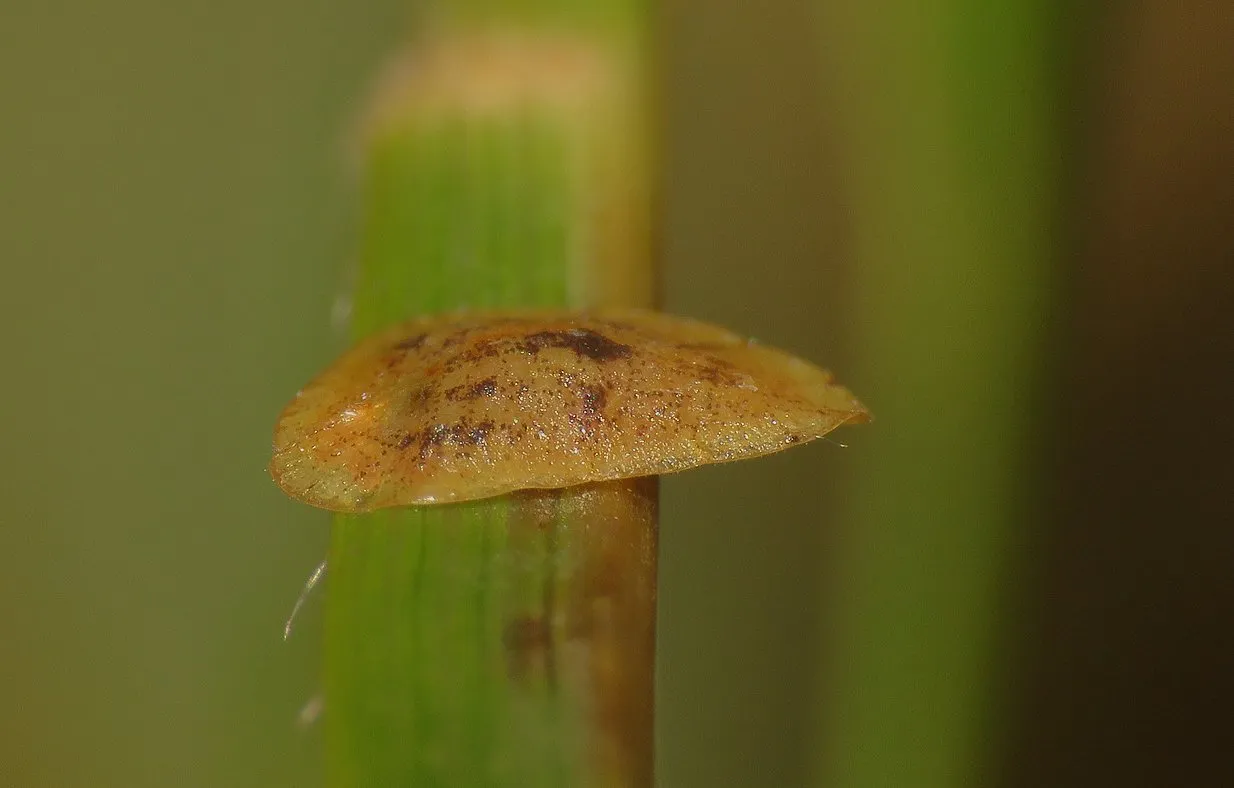
This little scale-like thing was found on a leaf of grass.
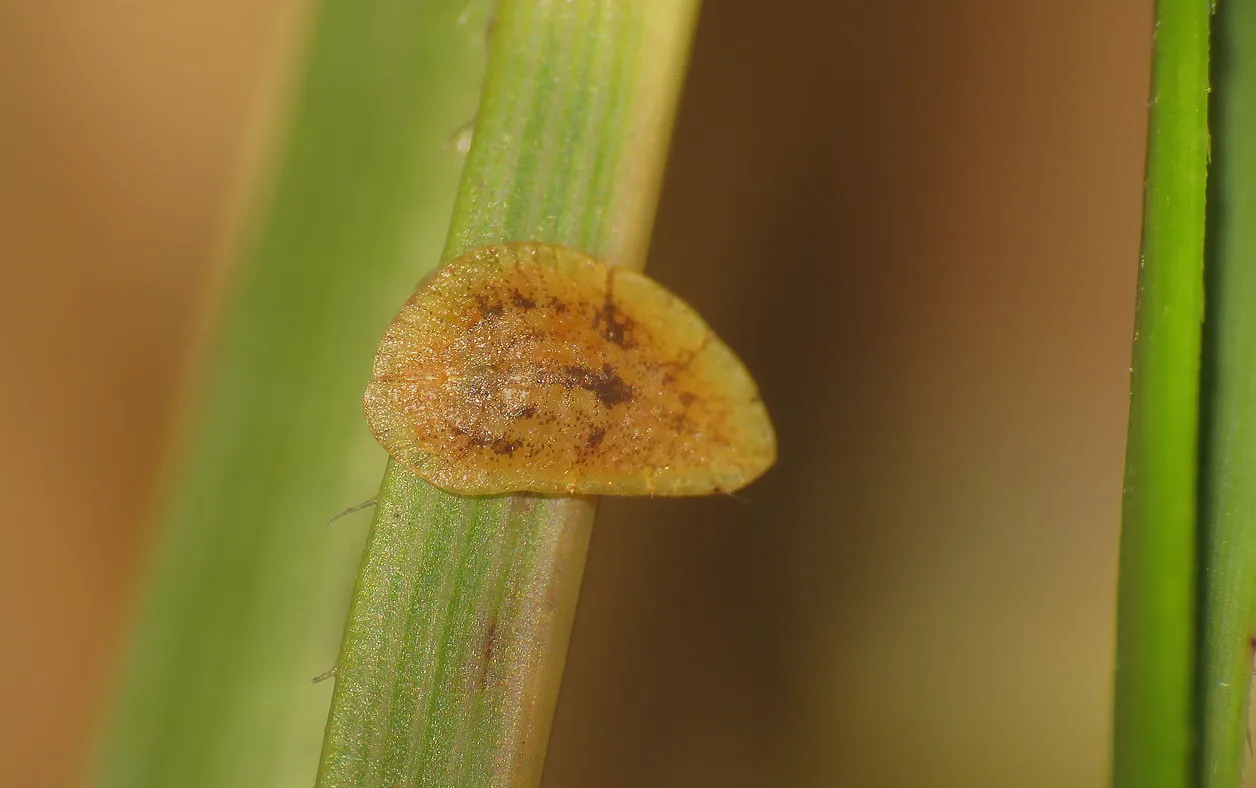
I'm pretty sure that it's a scale insect, but I can't tell you the name of the species.

A look at its underside uncovers the typical scale - insect anatomy that doesn't resemble any other insect or arthropod.
Scale insects are small insects of the order Hemiptera, suborder Sternorrhyncha. Their appearance can be dramatically variable and their sexual dimorphism extreme. The majority of female scale insects remain in one place as adults, with newly hatched nymphs, known as "crawlers", being the only mobile life stage, apart from the short-lived males. The female scale - insect in these photographs doesn't look like an insect at all. More like some kind of flatworm or a mollusk. A minuscule limpet or something similar.
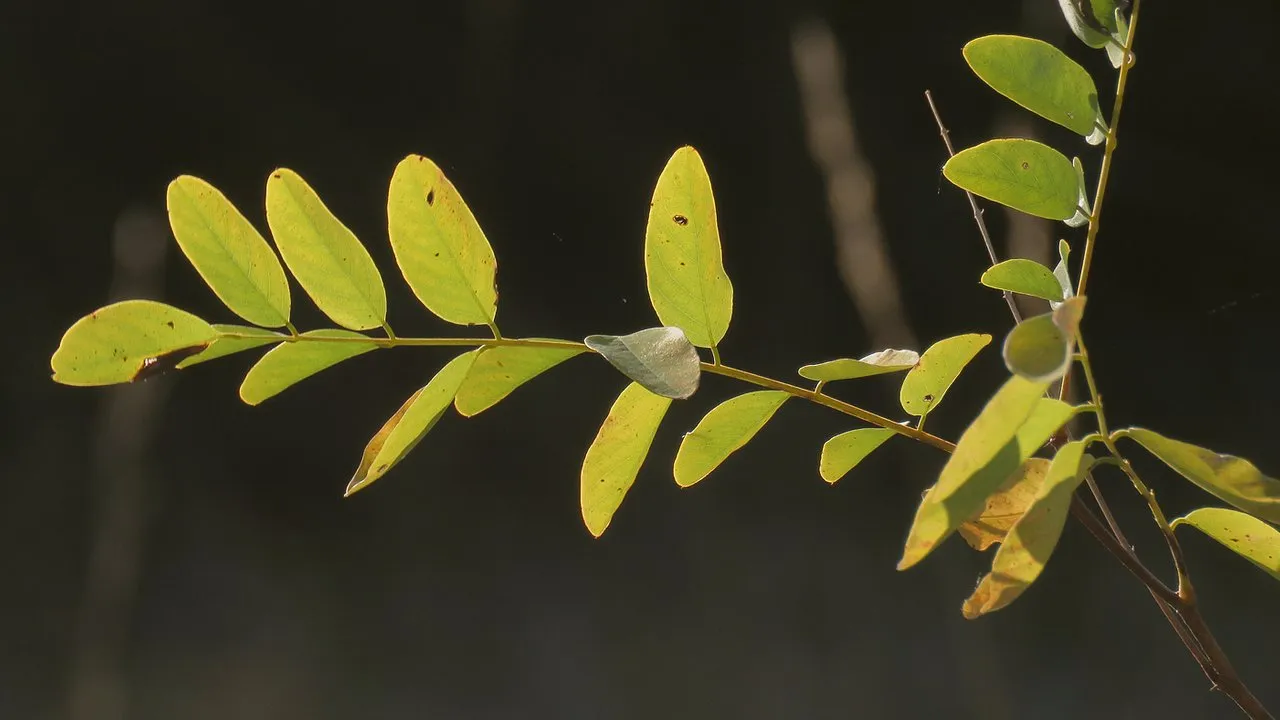
The Robinia pseudoacacia is a plant from the Fabaceae family. This family is commonly known as the legume, pea, or bean family. And in fact, the fruits ...
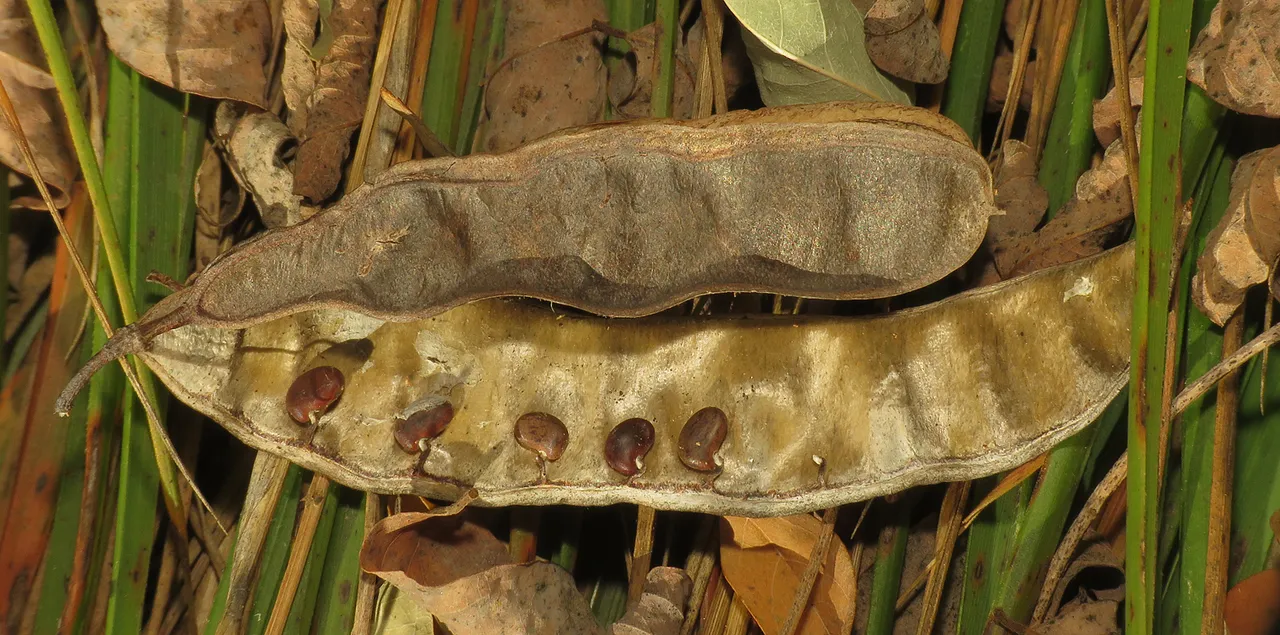
... that fall on the ground during the late summer and early autumn ...
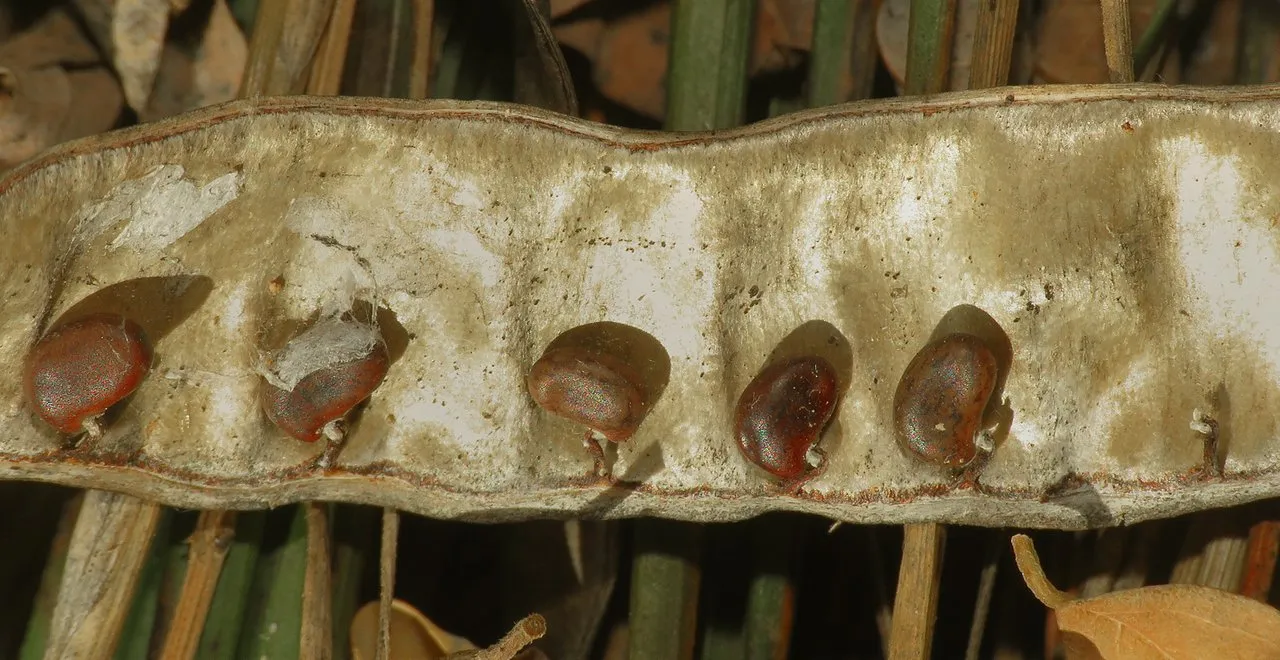
... look a lot like those of the cultivated pea.

When growing in sandy areas this plant can enrich the soil. It's a pioneer species, and it grows best in bright sunlight, as one of the first resilient trees that colonize new barren places.
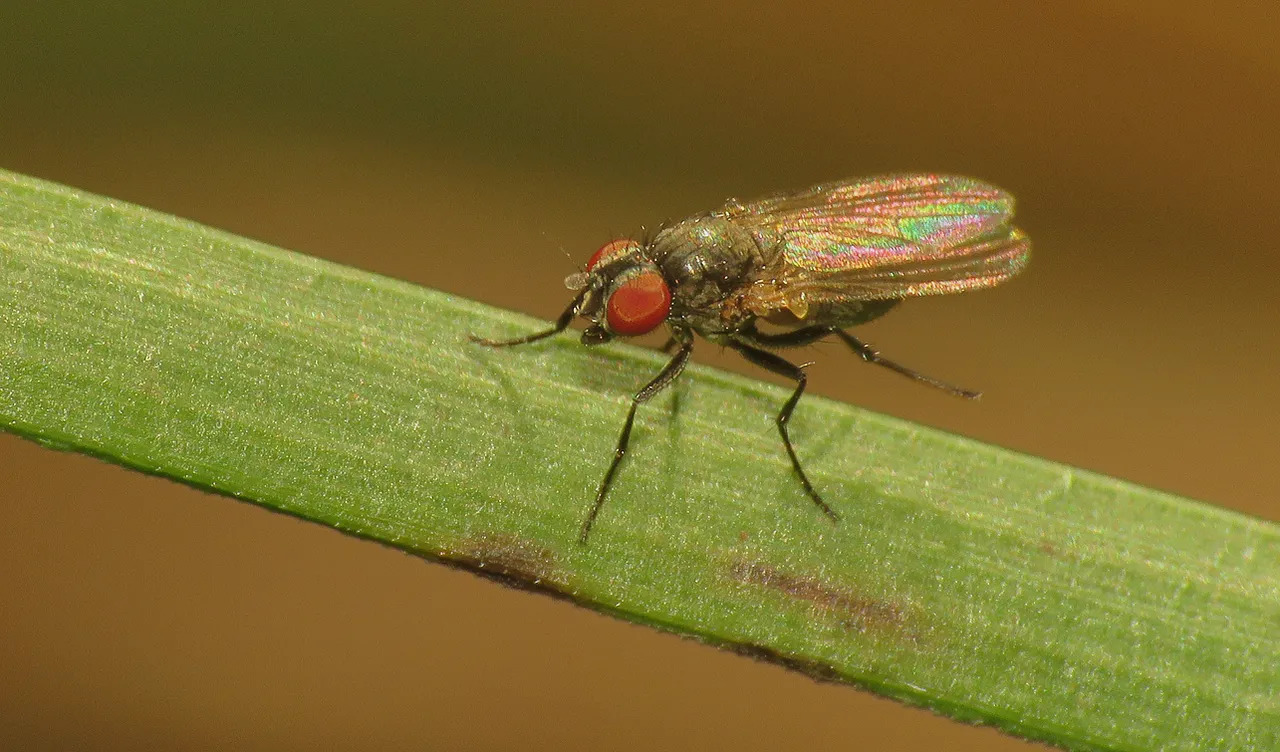
I took only a couple more shots before driving away. Photographed this small fly, I don't know the exact species ...
... and the Dock bug (Coreus marginatus).
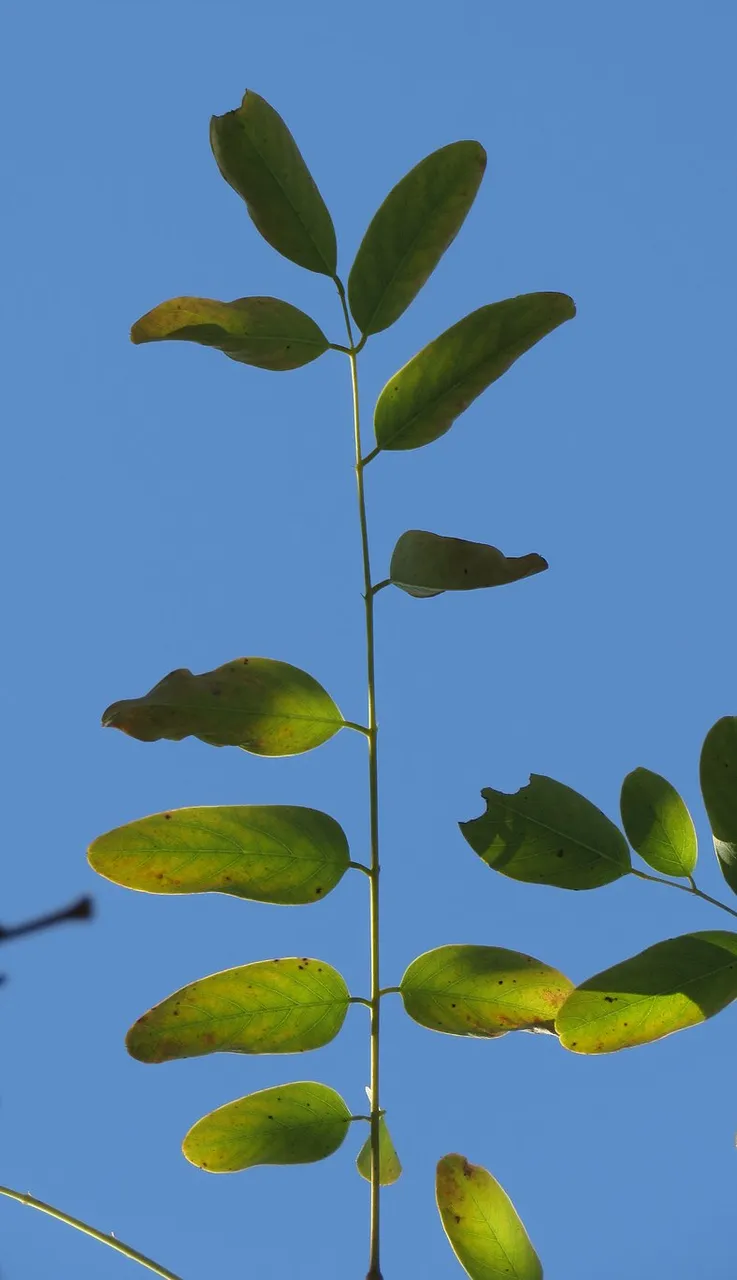
As always in these posts on HIVE, the photographs are my work - THE END.



